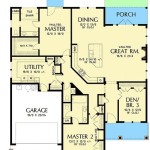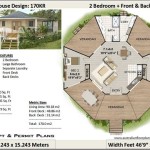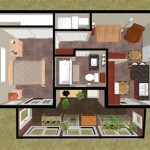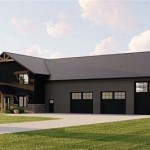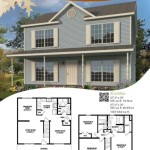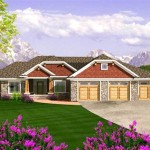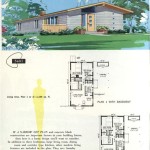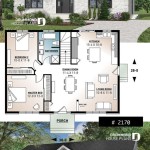Simple Bird House Plans: A Guide to Free Resources and Construction
Constructing a birdhouse provides a rewarding opportunity to engage with nature and contribute to local wildlife conservation efforts. The process, while seemingly straightforward, benefits significantly from utilizing well-designed plans. Numerous resources offer free simple birdhouse plans catering to various skill levels and desired bird species. This article explores the availability of these plans, essential considerations for their selection, and fundamental construction techniques to ensure a safe and functional birdhouse.
Accessing Free Birdhouse Plans
The internet serves as a vast repository of free birdhouse plans. Websites dedicated to woodworking, birding, and DIY projects frequently host downloadable plans in various formats, including PDF documents and detailed diagrams. Search engines can be employed using specific keywords such as "free birdhouse plans," "simple birdhouse design," or "DIY birdhouse blueprints" to locate these resources. It is crucial to evaluate the credibility of the source before downloading and implementing a plan. Reputable organizations like Audubon societies or established woodworking publications are more likely to offer accurate and tested designs.
Furthermore, many public libraries offer books and magazines containing birdhouse plans. These resources often provide thorough instructions, material lists, and illustrations, facilitating a smoother construction process. Local woodworking clubs and community centers may also host workshops or provide access to plan libraries. Engaging with these communities can provide valuable hands-on guidance and support.
Open-source design platforms also contribute to the availability of free plans. These platforms allow individuals to share and modify designs, resulting in a diverse range of options. However, it is essential to review the specifications and adapt the plan to suit available materials and desired bird species.
Key Considerations When Selecting a Birdhouse Plan
Choosing the appropriate birdhouse plan requires careful consideration of several factors to ensure it meets the needs of both the builder and the intended avian inhabitants. These factors include the target bird species, the available materials, and the desired aesthetic.
The size and shape of the entrance hole are critical determinants of which bird species will utilize the birdhouse. Different species require specific entrance hole diameters to prevent larger, more aggressive birds from displacing smaller ones. For example, a birdhouse intended for wrens will require a smaller entrance hole than one designed for bluebirds. Plans typically specify the appropriate entrance hole size for the targeted species. It is imperative to adhere to these specifications to create a safe and inviting habitat for the desired birds.
The interior dimensions of the birdhouse are equally important. Insufficient space can lead to overcrowding and stress for the nesting birds. Conversely, an overly large birdhouse may attract unwanted predators. Plans typically provide detailed interior dimension specifications to accommodate the nesting habits of the target species.
Material selection significantly impacts the durability and weather resistance of the birdhouse. Untreated cedar or redwood are excellent choices due to their natural resistance to rot and insects. Avoid using treated lumber, as the chemicals can be harmful to birds. Plans often recommend specific materials and provide guidance on sourcing them affordably.
The plan should also include detailed instructions on drainage and ventilation. Proper drainage prevents water accumulation inside the birdhouse, which can lead to mold and mildew growth. Ventilation ensures adequate airflow, preventing overheating during hot weather. These features are essential for maintaining a healthy environment for nesting birds.
Essential Construction Techniques
Successful birdhouse construction relies on the application of fundamental woodworking techniques. These techniques include accurate cutting, secure fastening, and proper finishing. Attention to detail throughout the construction process ensures a structurally sound and aesthetically pleasing birdhouse.
Accurate cutting is paramount. Utilizing precise measurements and employing appropriate cutting tools, such as a saw, ensures that the various components of the birdhouse fit together correctly. It is advisable to double-check measurements before cutting any material to minimize errors. Using a template, especially for the entrance hole, can ensure uniformity and accuracy.
Secure fastening is essential for ensuring the birdhouse's structural integrity. Screws are generally preferred over nails, as they provide a stronger and more durable connection. Selecting the appropriate screw length is crucial to prevent them from protruding through the wood and potentially injuring birds. Pre-drilling pilot holes before inserting screws can prevent wood splitting.
Assembly should follow the plan's instructions meticulously. Starting with the base and gradually adding the sides, front, and roof ensures a stable structure. Ensuring that all joints are flush and secure is crucial for preventing water leakage and drafts. Using wood glue in conjunction with screws can further enhance the birdhouse’s durability.
Proper finishing protects the birdhouse from the elements and enhances its aesthetic appeal. Applying a non-toxic sealant or paint to the exterior surfaces can extend its lifespan. However, avoid painting the interior of the birdhouse, as the paint fumes can be harmful to birds. Choosing colors that blend with the natural environment can help camouflage the birdhouse and make it less conspicuous to predators.
Installation of the birdhouse should be carefully considered. Mounting the birdhouse on a sturdy pole or tree branch, at an appropriate height for the target species, is essential. Positioning the birdhouse away from direct sunlight and prevailing winds can help maintain a comfortable temperature inside. Regular cleaning of the birdhouse after each nesting season is crucial for removing old nesting materials and preventing the buildup of parasites.
Modifications to free plans are often necessary to adapt them to specific needs or preferences. For instance, adding a predator guard around the entrance hole can deter squirrels and birds of prey. Incorporating a hinged roof or side panel allows for easier cleaning and maintenance. However, any modifications should be carefully considered to ensure they do not compromise the safety or functionality of the birdhouse.
Safety precautions are paramount throughout the construction process. Wearing safety glasses protects the eyes from flying debris. Using gloves protects the hands from splinters and sharp edges. Operating power tools with care and following manufacturer's instructions is essential for preventing accidents. A well-ventilated workspace is crucial when working with paints, sealants, or wood preservatives.
Different bird species have varying preferences for nesting materials. Providing a small amount of suitable nesting material, such as dried grass, straw, or feathers, can encourage birds to utilize the birdhouse. However, avoid using synthetic materials or chemically treated products, as these can be harmful to birds.
Maintenance of the birdhouse is an ongoing process. Regularly inspecting the birdhouse for damage, such as cracks, leaks, or loose fasteners, ensures its continued functionality. Repairing any damage promptly can prevent it from worsening and prolong the birdhouse’s lifespan. Cleaning the birdhouse annually removes old nesting materials and parasites, creating a healthier environment for future nesting birds.
The placement of the birdhouse can influence its occupancy rate. Positioning the birdhouse in a location that offers protection from predators and the elements is crucial. Avoiding areas with high levels of human activity can also help increase the likelihood of birds utilizing the birdhouse. Observing the local bird populations and their nesting preferences can provide valuable insights into optimal placement strategies.
The construction of a birdhouse from free plans is a fulfilling and educational experience. It provides an opportunity to learn new woodworking skills, connect with nature, and contribute to wildlife conservation. By carefully selecting a plan, adhering to construction techniques, and implementing proper maintenance practices, individuals can create a safe and inviting habitat for birds in their local area.

Free Bird House Plans Bluebird

Birdhouse Plans 7 Simple Steps With Pictures Diy Projects Patterns Monograms Designs Templates

Birdhouse And Nest Box Plans For Several Bird Species The Birders Report

Birdhouse Plans Easy One Board Diy Project Projects Patterns Monograms Designs Templates

Free Bird House Plans Bluebird Purple Martin Wren More Kits

Free Birdhouse Plans Diy Homemade Nesting Box Projects Patterns Monograms Designs Templates

Simple Bird House Plans Free Construct101

25 Free Bird House Plans To Welcome Feathered Friends Your Garden Insteading
:max_bytes(150000):strip_icc()/birdhouse-bd244c546f454563a8c887babfba0806.jpg?strip=all)
32 Free Diy Birdhouse Plans You Can Build Today

15 Bird House Plans Simple Diy
Related Posts

